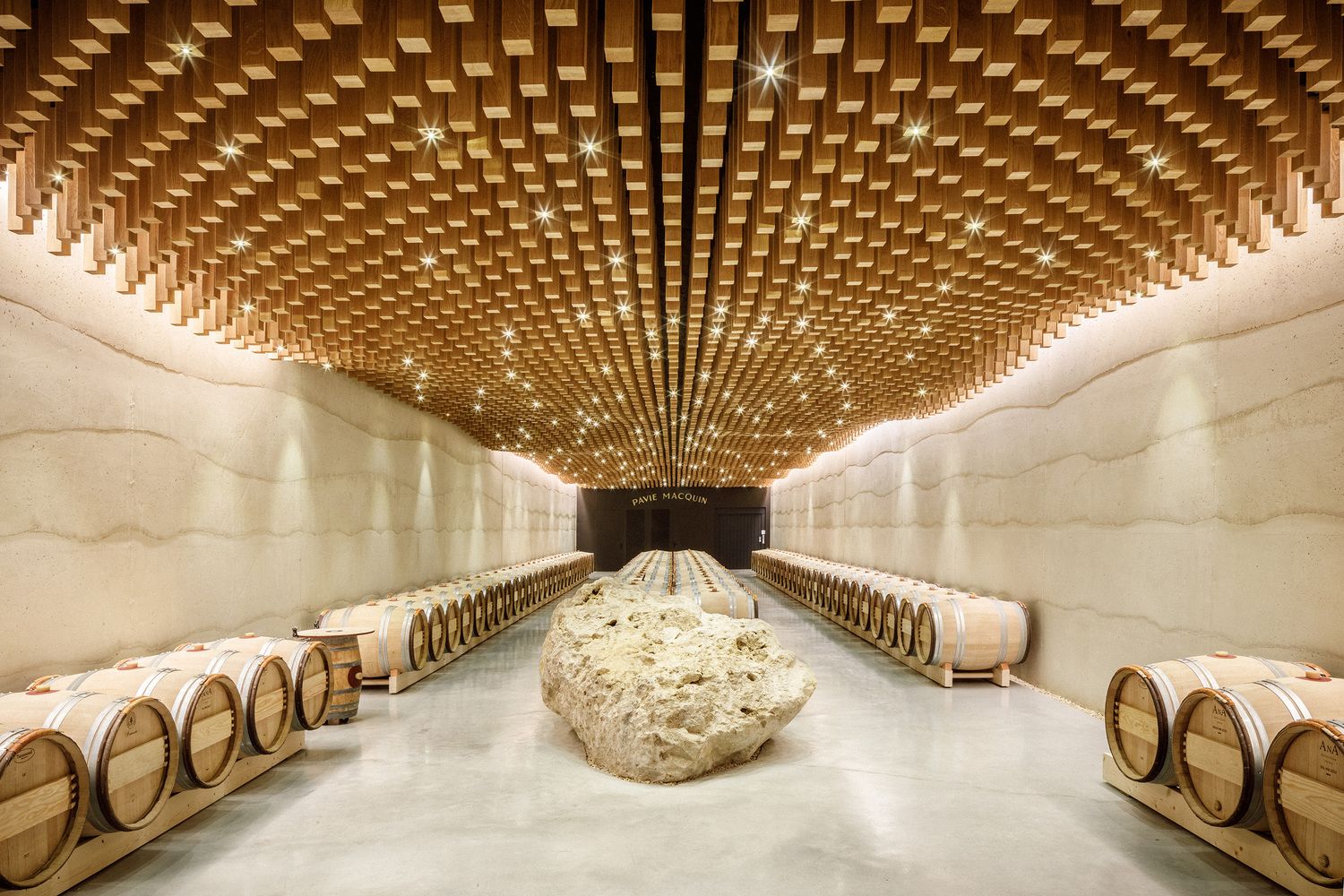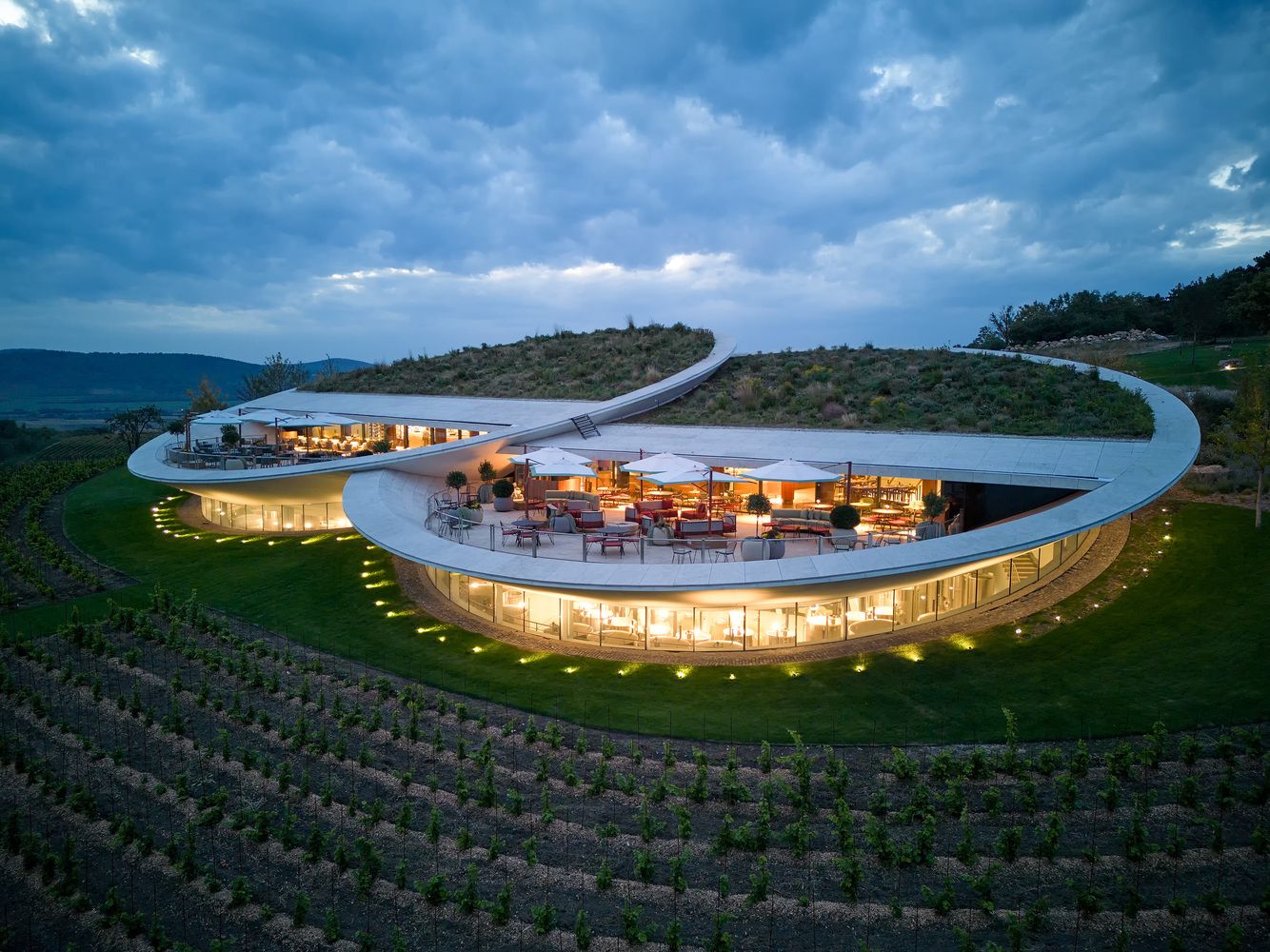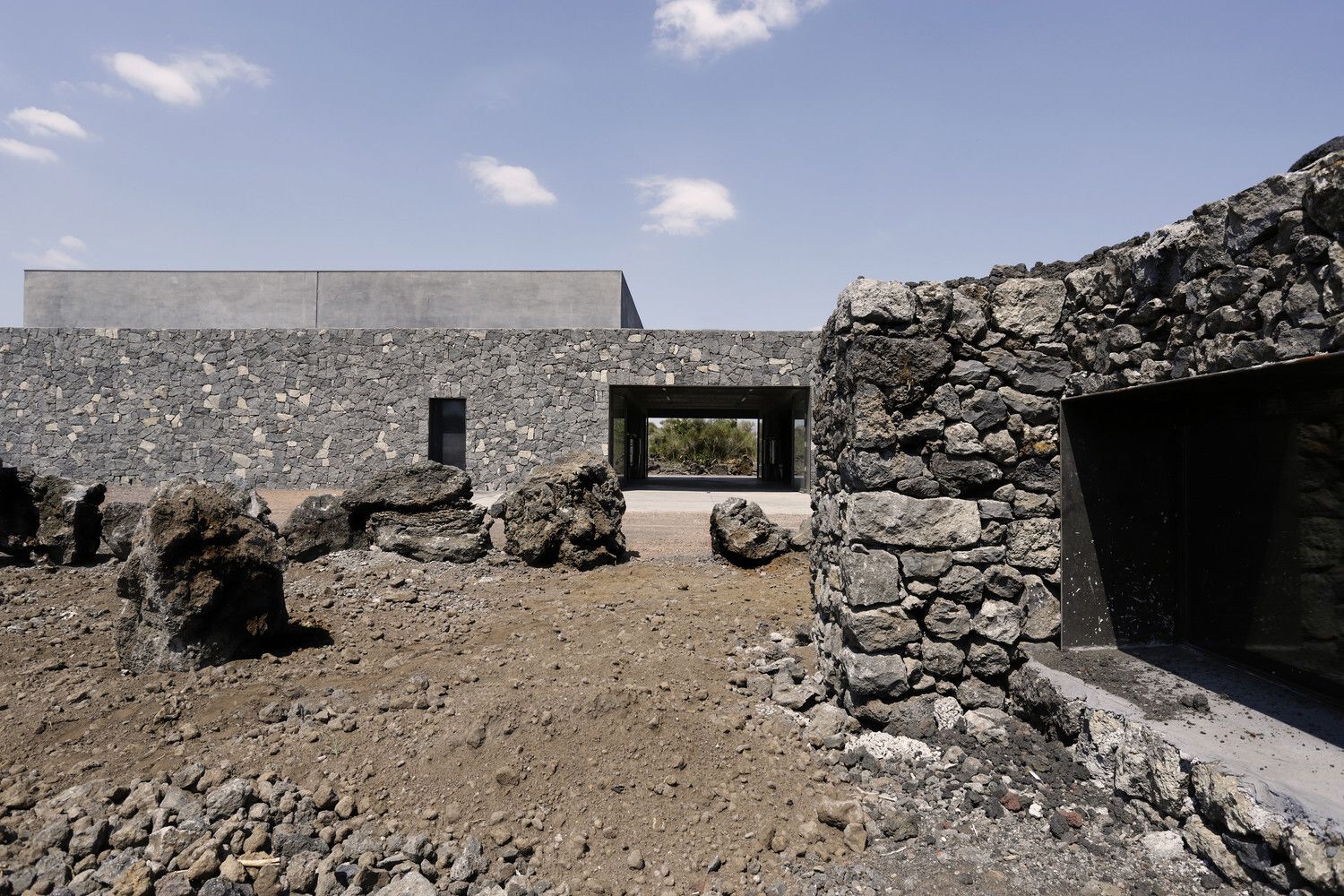The architecture of wine.
14.11.2025Using 15 contemporary wineries from around the world as examples, the online magazine ArchDaily recently demonstrated that these buildings are increasingly seen not only as functional facilities for fermentation, storage and distribution, but also as spaces where landscape, materiality and visitor experience come together. From underground cellars hidden beneath fields to sculptural landmarks rising up in rural areas, these buildings shape the identity of wine-growing regions while offering visitors a carefully staged encounter with the production process.
At the intersection of agriculture, tourism and culture, wineries offer architects unique opportunities to combine technical requirements with a spatial narrative, writes the magazine. They must respond to environmental conditions, precisely control temperature and humidity, and integrate into sensitive ecosystems, while also providing spaces for tastings, gatherings and celebrations. As a result, this typology has led to a variety of architectural solutions. Some are rooted in tradition and local craftsmanship, while others explore advanced technologies and contemporary forms.
Archdaily continues: “Beyond production and tasting, wineries often act as mediators between the natural and built environments. Their architecture addresses issues of visibility, topography and material durability, transforming the act of winemaking into a spatial experience. Many of these projects are built into hillsides or carved into rock to ensure stable climatic conditions, while others open dramatically onto the landscape, offering views that reinforce the connection between the product and its place of origin. Whether through subtle integration or bold sculptural forms, each winery defines a different balance between industry and art.
Here we present four selected examples. Read the full article and everything you need to know about the 15 examples of modern wineries here.
The Le Dome Winery / Foster + Partners
Visitors approach the winery via a tree-lined avenue, at the end of which stands a building with a circular floor plan. A combination of two ramps – one outside, emphasising the connection to the site, and one inside, allowing visitors to walk through the different stages of wine production — gives the new building its spatial definition. Both ramps lead to an upper-floor gallery that forms the social heart of the building, with tasting tables, an elegant wine bar and entertainment areas — surrounded by a 360-degree view of the adjacent vineyards.
The renovation and extension project gives the estate a strong identity that is closely linked to its history and heritage. The renovation of the production facility and the creation of an underground ageing cellar symbolise a new chapter. The renovation is part of a frugal design approach conceived within the framework of sustainable development to minimise the buildings’ impact on the environment and ensure quality of life for the site’s various users.
Tokaj Sauska Winery / BORD Architectural Studio
The light form of the building, which floats above the vineyards, blends harmoniously into the protected landscape, while its breathtaking appearance contributes significantly to the tourist development of the wine region. The special characteristics of the volcanic soil in the region and the continental climate created ideal conditions for viticulture even before the conquest. Settlements sprang up in the valleys, and wine production began in cellars carved out of rhyolite tuff rock. For many centuries, Aszú, a dessert wine aged in oak barrels, was the typical wine of the region.
Cantina alle Pendice dell’ Etna / Gaetano Gulino + Santi Gaetano Albanese
The project is located on a flat clearing in the middle of a lava flow from 1800, from which there is a magnificent view of the lush, imposing vegetation. The location has numerous country roads, making it easy to reach important destinations and major traffic arteries. From a morphological point of view, the area under investigation is located about 620 metres above sea level on the northern slope of Mount Etna, which is flat and slopes down to the north and north-east and is characterised by gently sloping hillsides.
Read the full article and everything you need to know about the 15 modern wineries presented by archdaily here.



